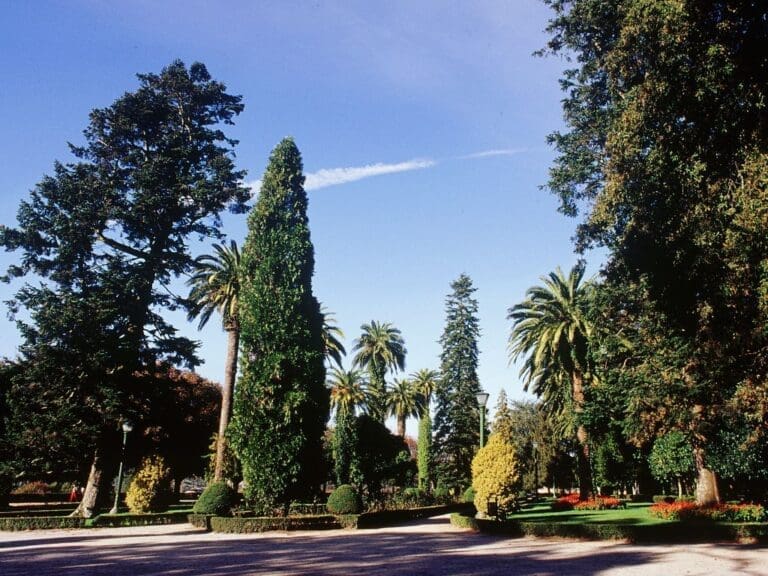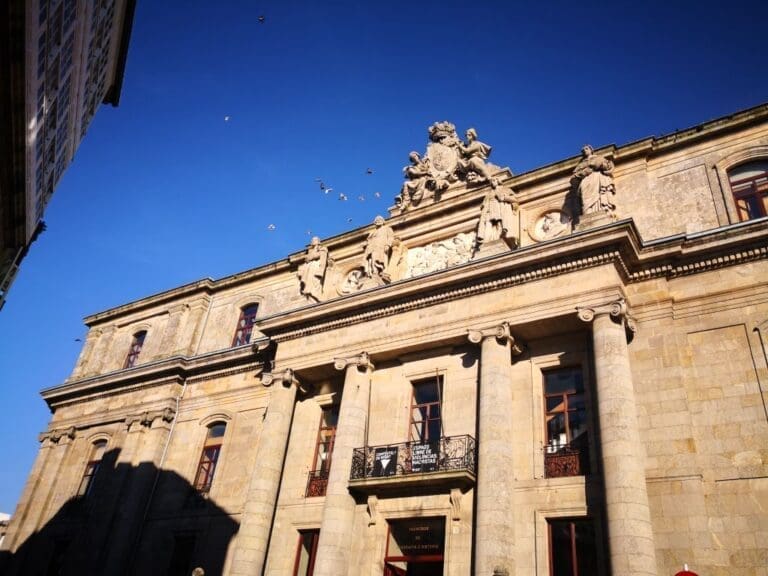Built in the 12th century on the banks of the River Sar, it is the church, along with the Cathedral, that still has the greatest proportion of its original Romanesque structure.
The most outstanding features outside are the small façade tower and the robust buttresses that were built between the 17th and 18th centuries in order to protect the north walls and prevent them from falling down. Due to a technical error in its construction, or to the bold elevation of the side naves, or to the sliding of the unstable land on which it is built and which is often flooded by the river, or to the intention of those who worked on its construction, the inner walls and columns are visibly inclined. This singular attraction made it necessary to rebuild the barrel vault in the 16th century.
The beautifully proportioned interior amazes all who visit it due to the inclination of the columns facing the side naves, which gives it an unstable look. The baptismal font, to the right of the main door, is an interesting archaeological piece from the 12th century.
The cloister, one of the most beautiful of Compostela’s Romanesque style, is accessed by means of the Sacristy. Only one of the original wings remains; the rest belongs to the 17th and 18th centuries. A fine collection of archaeological pieces is on display inside.

 Santiago de Compostela, Galicia
Santiago de Compostela, Galicia



 Colexiata de Santa María de Sar
Colexiata de Santa María de Sar 




